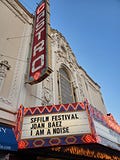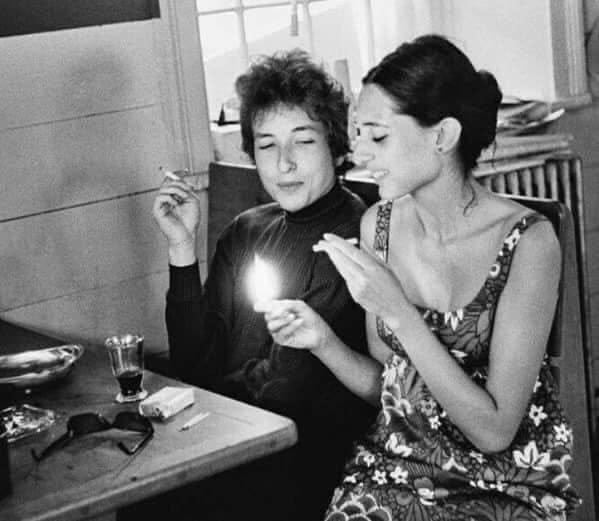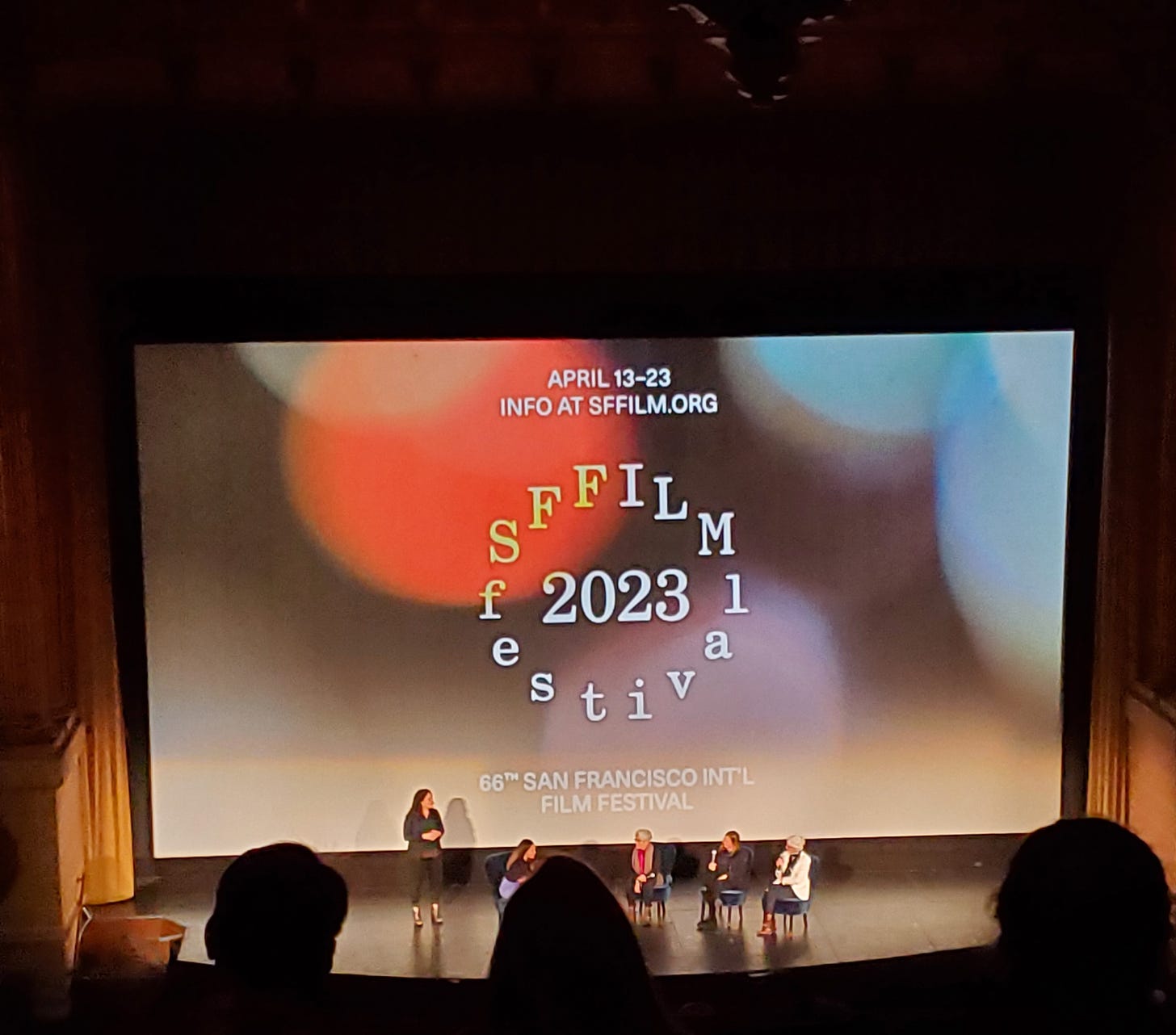The other day I was standing outside the Castro Theater on Market Street with a group of my students. Across the street, a brisk wind was whipping that big gay flag around. Two stark-naked men warmed their asses on a sun-dappled wall, and a long line of patrons snaked out of that Double Rainbow ice cream parlor which has been there since dinosaurs ruled the earth. In other words, it was one of those blue and gold afternoons in San Francisco when the Castro District seems as clean and kindly as it was in the olden days; before tech bros and pandemics and climate disasters and neoliberalism ruined life for everybody.
We were waiting to be let into the SF Film Festival showing of “I Am A Noise,” a documentary about Joan Baez. And eventually I was moved to boast: "Joan Baez went to my high school."
"Cool!" replied one of my students, ever so politely. "Chance the Rapper went to mine."
And I had to laugh. I mean, celebrity-wise, Chance is to Mekhi’s generation as Joan Baez was to mine. Joan’s work as a progressive voice and community organizer was crucial to a particular time and place and era, just as Chance’s has been to a very different one. Anyway, it’s not surprising Mekhi knew very little about her before we saw the movie: chronologically, the musical equivalent for me when I was in college would have been Benny Goodman or someone like that.
My students were probably just happy to get out of class, but the other people waiting in line to get into the theater were demonstrably excited by the prospect of seeing Joan Baez in person. However, these people were not just old, but elderly. More than a few were using walkers. Also, I noted that there was a representative from KLM outside the theater giving away a chance to win free tickets to Amsterdam, and no one was entering the contest because you had to use a QR code on your smart phone and none of them knew how to do that. It’s really not exaggerating to say that Mekhi and his classmates were the youngest people at this screening by about four decades, with the next to youngest person being me, for although she did cast a long shadow over my hometown, Joan Baez was already past her prime as an icon when I was growing up.
Today, she is 81, and the perfect subject for a biopic. I picture it as starring Jenna Ortega; rife with scenes of handsome beatniks and wild folk singers. God, the drama of it all! Richard Farina driving his motorcycle over a cliff! David Harris being frog-marched to prison! It practically writes itself. Boston and Big Sur, Berkeley and Birmingham…Marching on Washington, crossing the Edmund Pettis Bridge... I would watch the CRAP out of that.
“I Am A Noise” isn’t that film, but it does include real footage of all those events and quite a bit more. Like the Netflix version I envision, there is a ton of drama and many groovy fashions, but being a documentary, it has a far more somber feel. It begins with an aphorism from Gabriel Garcia Marquez: "Everyone has three lives: one public, one private, and one secret," and in Baez’s case, truer words seem never to have been spoken. The first half of the film is devoted to the public and the private, much of which we know, but the last part addresses her secret, which is her struggle with mental illness and her family’s dysfunction around that and around her early fame.
The film delves into a number of other subjects in passing as well, including the difficulty for women of aging in the music industry and the flattening effect the civil rights and anti-war movement on those who participated in it. And of course, there’s footage of a teenaged Joan goofing around with a smiling Bob Dylan, the young man whose music she helped to popularize. "He was just a person then," she says, wistfully, just before the film turns to his "Don't Look Back" era and we watch him dump her in public so hard that I could hear my startled students utter a collective 'oof'.
That was the point when I realized that I shouldn’t have been so worried that the students would be bored. A biopic might have tried to recreate the technicolor 60s for us in a super fun way, but the documentary version has no need to do that, since it turns out that the Baez family were quite ahead of their time in terms of electronic technology, and actually communicated with one another via audio and video tape. As far back as the 1940s, Mr. Baez took countless home movies of his kids, and in the 1960s, Joan often sent her family audio tapes, rather than letters, from the road.
All of these have been kept and catalogued in a special room in her house, neatly labeled. There is reels and reels of it, as well as letters and diaries and art work by Joan which she has kept throughout her life, from an extremely young age. The resulting use of this material is what makes this film remarkable in its candor and intimacy: I've seen a million celebrity profiles and never seen an artist allow that much access into their world.
After it was over, my students and I filed into the street, slightly dazed by our close encounter with the past. It is famously a different country, but sometimes it intersects with the present, and this was one of those nights. Perhaps it was watching those old home movies on a giant screen had felt like we were stepping backward in time and space, and for a moment it felt like I hadn’t quite caught back up with the present. The Castro District was still bursting with light and color as dusk fell upon San Francisco, and the world felt briefly sane. Although I am still not sure how much my students liked the movie itself, as they waited on the corner for the 24 Divisidero, they expressed a lot of enthusiasm for the Castro Theater itself.
"It's so iconic!" they said, and it is. But then, so is Joan Baez.






Joan is hilarious. In Nashville Emmylou interviewed Joan. I felt like I was a fly on a sleepover's wall. They could have been anywhere between 12 and 90 . Some really great life thoughts were included. I do wish there were younger people there.
Wow Gina! Nice article, I really enjoyed it. Greetings from the past, I was there.